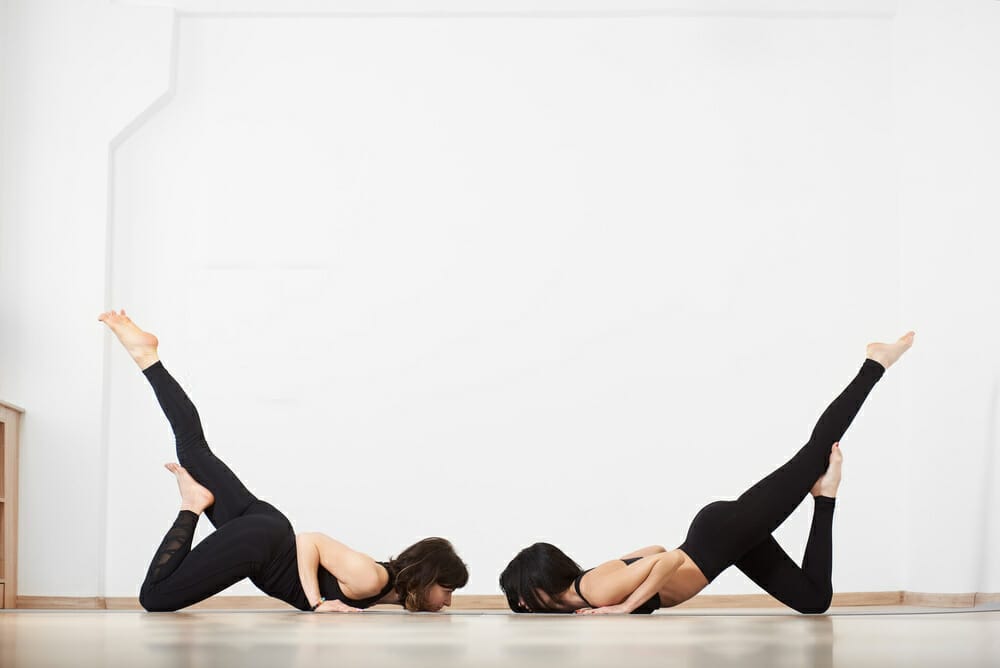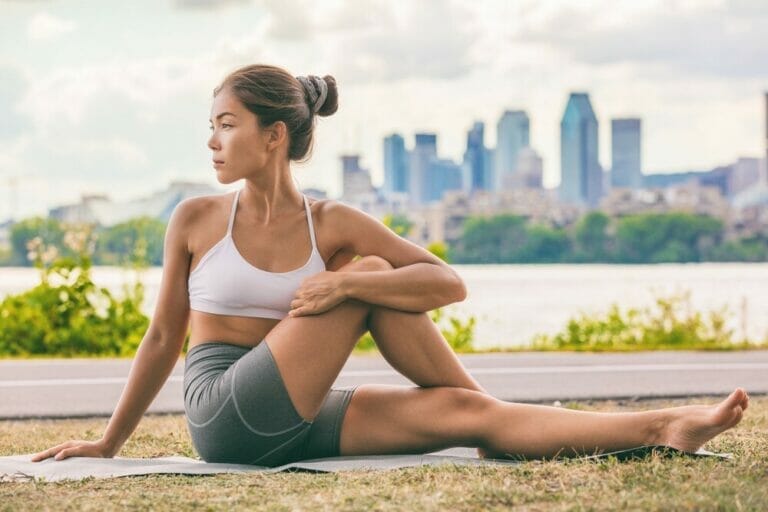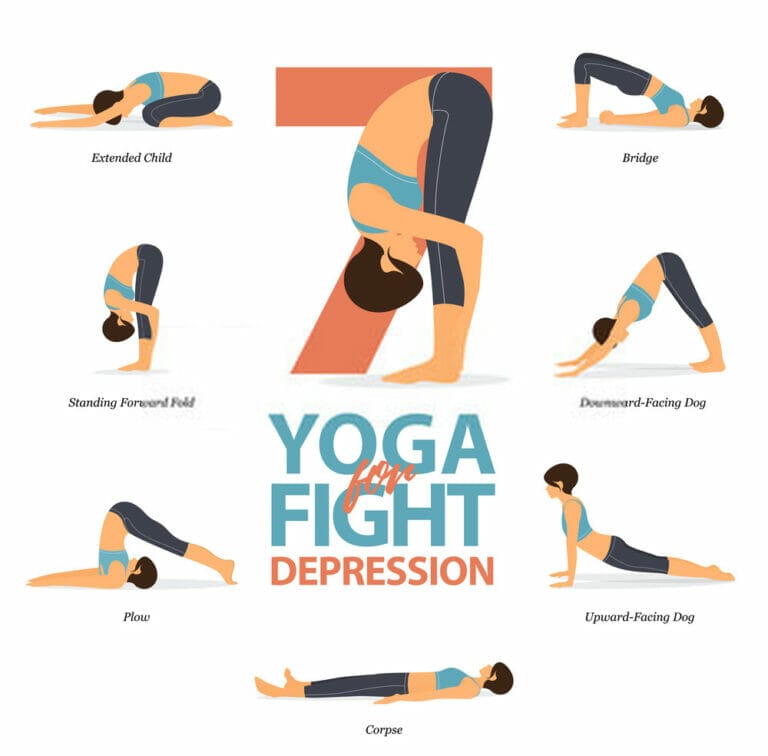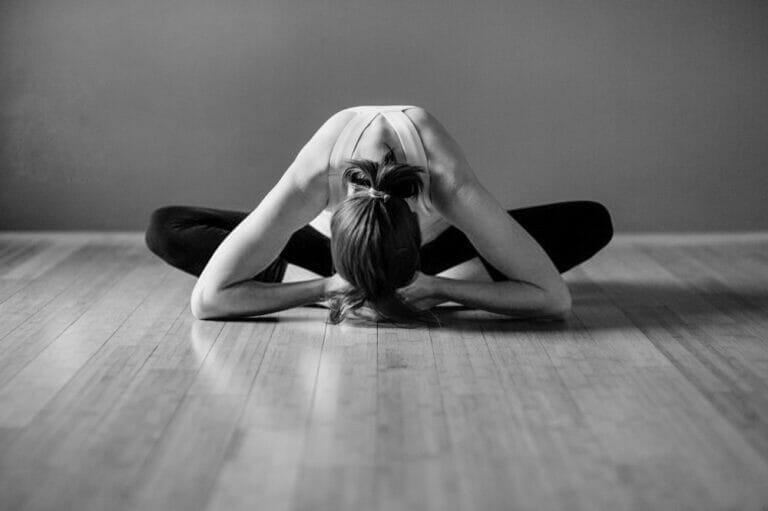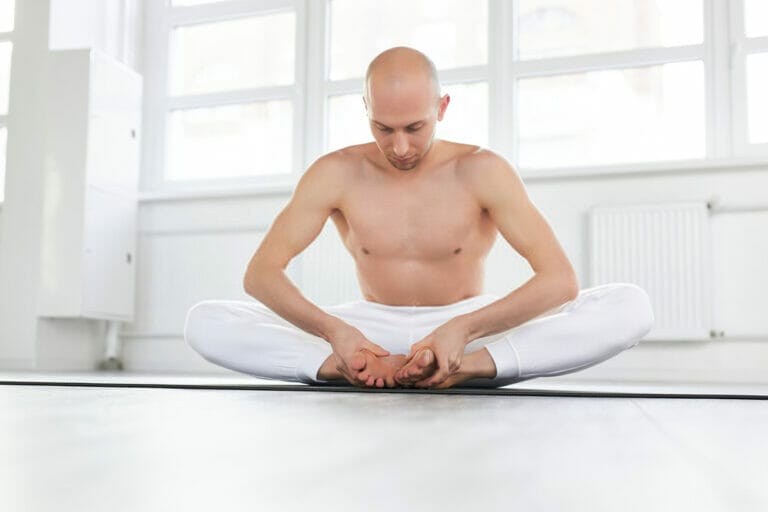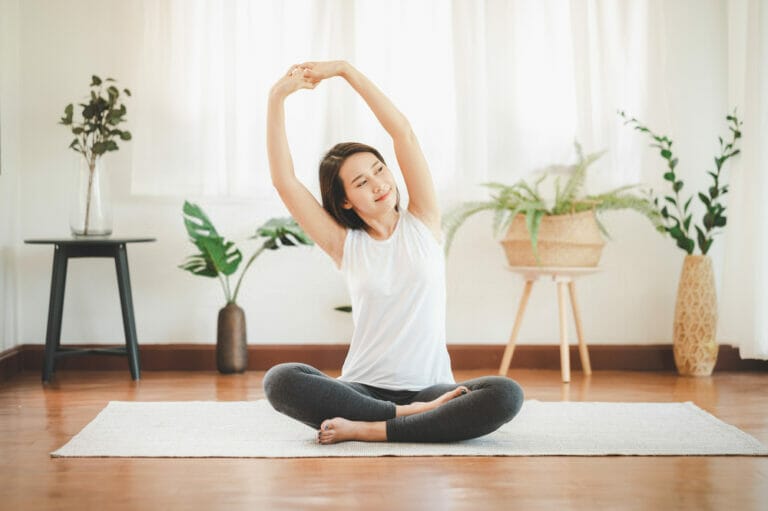Beginner Acro Yoga Poses – How To Do Basic 2-3 Person Acro Yoga Poses?
AcroYoga is a playful twist on traditional yoga that combines Vinyasa or Hatha techniques with acrobatics. So, lets look at some acro yoga for beginners!
Basic Acro yoga poses are a movement-based practice that combines gymnastic maneuvers, acrobatics and dance.
The main idea behind the 2 person acro yoga poses for beginners and the 3 person acro Yoga Poses for beginners is to flow through various acrobatic poses provided in a series of movements set to music.
Acro yoga is a great workout for the whole body because it stimulates all parts of the muscle, skin and joints with cardio activity, improves balance, flexibility and agility.
It tones the muscles, increases strength and endurance, improves concentration and concentration levels while reducing stress.
If you want to attempt Beginner Acro Yoga Poses, these positions are ideal for beginners since they will introduce you to the practice and acquaint you with the particular obstacles that come with it.
Lets look at some 2 person acro yoga poses for beginners in this article! If you are an advanced yoga, try 3 person acro Yoga Poses for beginners too!
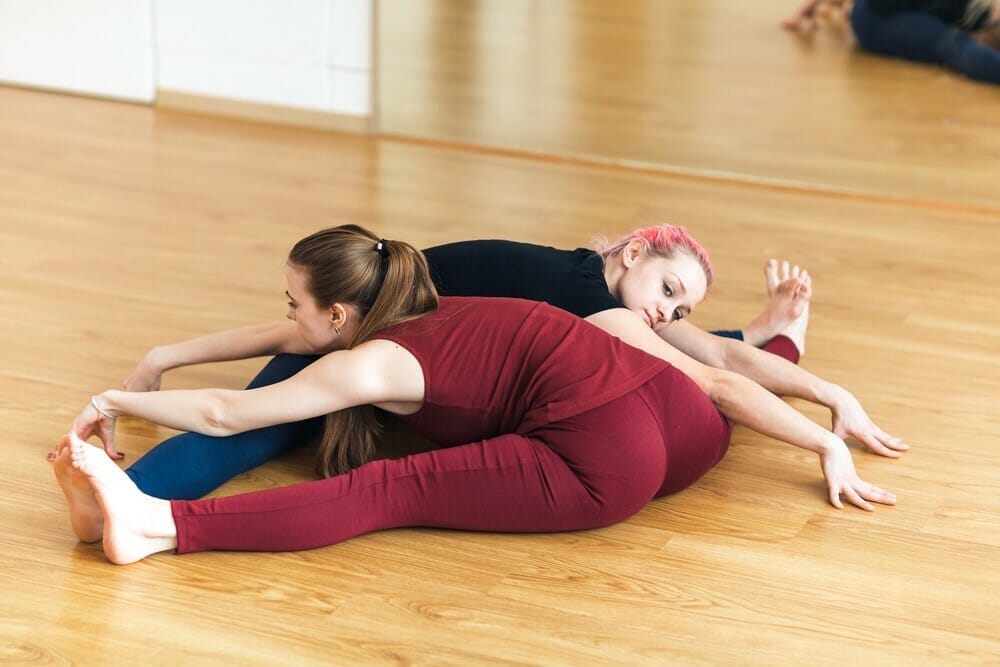
So grab a partner and a spotter, experiment with various postures, and remember to have fun!
Related Posts:
- All You Need To Know About Vinyasa Yoga
- Different Types Of Yoga For Beginners For Body Mind & Soul
- All About Yoga – Its History, Types, Uses And Many More
- 3 Person Yoga Poses – Find Out Now
- Ashtanga Yoga
- All About Yoga Wheel
Beginner Acro Yoga Poses – 2 Person Acro Yoga Poses For Beginners!
Here are some basic acro yoga poses for two people that you can try with your partner!
Plank Press
Plank Press is another excellent starting posture that allows the base to become accustomed to the sensation of supporting the weight of another person. It is the best 2 person acro yoga poses for beginners!
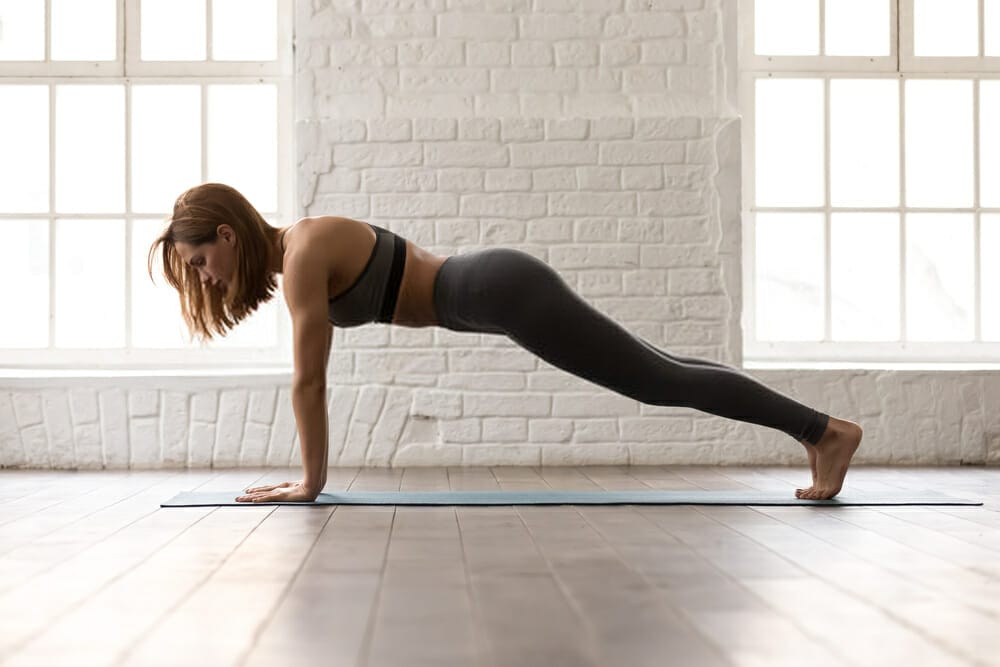
It also develops trust between the two partners. It is a prerequisite for Front Plank, which we will discuss more below.
How to do it:
The base will lie on their back, knees bent, and feet flat on the ground. The flyer will face the bottom and stand at the base’s feet.
Next, the base will lift their feet off the ground and press them into the flyer's hips, maintaining their feet approximately hip-width apart and their arms straight overhead.
Finally, the flyer will stand tall, core engaged, and arms outstretched to form a T shape.
The base will then bend their knees towards their chest, supporting the flyer’s weight as they lean forward.
While this is happening, the flyer will maintain a straight and solid posture with their feet on the ground.
Folded Leaf
This pose can be used as a rest or transitional posture between other AcroYoga postures. It is beneficial for the flyer, who needs to learn how to land with control and the confidence to avoid injury.
How to do it:
Move into the Plank Press beginning position, with the base’s feet pressing into the hips of the standing flyer and their arms reaching up.
The flyer will next bend at the hips and grip the base’s knees with straight arms.
Next, the flyer will bend at the elbows to drop the body even more profoundly, with the base supporting the flyer’s shoulders.
The base will then turn their knees to propel the pilot forward, stacking their shoulders on top of each other.
The base will then turn their toes out and stretch their legs up, pulling the flyer off the ground. The flyer’s hands will remain on the base’s knees, and their legs will be heavy.
Front Plank
This posture is a more advanced variation of Plank Press and will challenge both the base and flyer to support their partner’s weight in a straight line from feet to head.
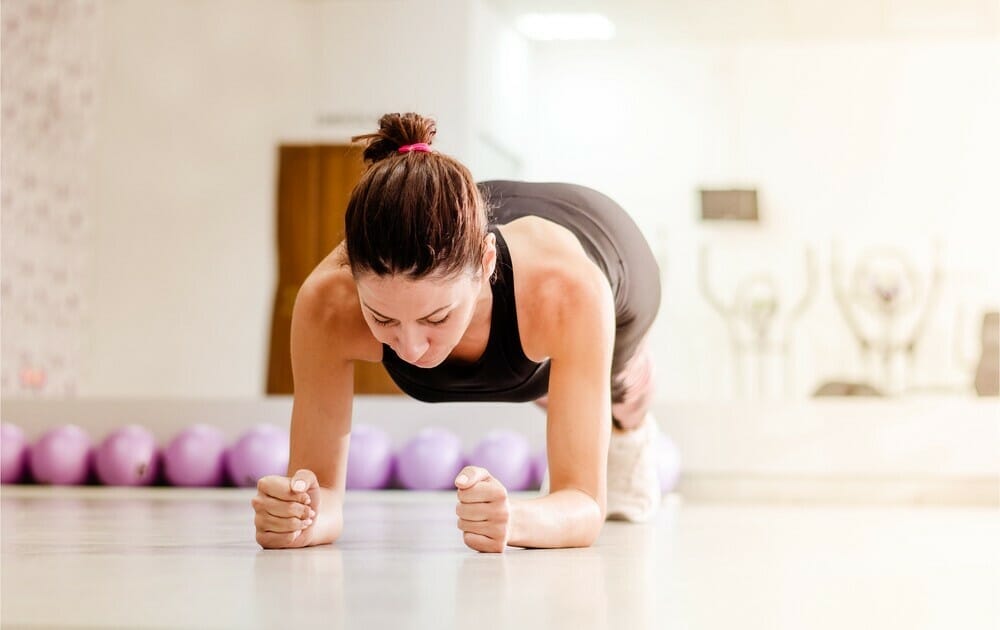
How to do it:
Begin in Plank Press, with the feet of the base pressing into the hips of the flyer. The flyer will stretch out and grab the base’s hands. The arms of both partners should be straight.
As the flyer presses into the ground and prepares to take flight, the base will bow their knees into their chest. The base will stretch their legs straight up as the flyer takes off, maintaining their feet above their hips.
At this stage, the couples should still be holding hands for support. The flyer should engage their core while straightening their legs and pointing through their toes.
Partner Forward Folds
One of the Beginner Acro Yoga Poses, folded forward folds are an excellent exercise for the flyer. By practising them in pairs, you can begin to develop the strength and confidence necessary to perform more advanced postures without fear of injury.
How to do it:
The flyer and the base will stand back to back, their feet somewhat wider than hip-width apart. Then they’ll hook elbows, with the base’s elbows below.
The base will then bend forward while maintaining its back straight. The flyer will automatically follow back, rising off the ground. The base should keep the torso level aligned with the hips.
The flyer can bow their knees into their chest, straighten them up towards the sky, or stretch their legs out in a broad straddle stretch.
Plank On Plank
It is an excellent posture for the base, which will help them develop the confidence and control necessary to carry another person on their back.
How to do it:
The base will go into Plank Pose, with their arms straight, core engaged, and shoulders piled over their wrists. Their hands should be firmly pressed into the ground, with their fingers stretched wide.
The flyer will next bring their hands to the ankles or calves of the base and grip them. Then, one foot at a time, they will step one foot up onto one shoulder, then the other on the other shoulder.
The feet can loop around the base’s shoulder (or stretch past the shoulders if the flyer is taller), or the flyer can curl their toes and rest on the base’s shoulder blades if feasible.
Jedi Plank
It is a challenging position that requires a lot of trust and cooperation between the base and flyer.
How to do it:
The base will begin starting on their backs, with their legs straight and arms at their sides. Their legs should be spaced hip-width apart.
Next, the flyer will stoop down to the base’s feet and grip their shins.
They’ll then lift one foot at a time off the ground, allowing the base to grab the flyer’s ankles with their hands.
The arms of both the base and the flyer should be straight, and the flyer should be in a Plank Pose.
Simultaneously, the flyer will begin to elevate their hips to form an upside-down L shape, while the base will lift their body off the ground and stretch their arms above their heads while still gripping the flyer’s ankles. In the end, they will form a box shape.
The base will begin starting on their backs, with their legs straight and arms at their sides. Their legs should be spaced hip-width apart.
Next, the flyer will stoop down to the base’s feet and grip their shins.
They’ll then lift one foot at a time off the ground, allowing the base to grab the flyer’s ankles with their hands.
The arms of both the base and the flyer should be straight, and the flyer should be in a Plank Pose.
Simultaneously, the flyer will begin to elevate their hips to form an upside-down L shape, while the base will lift their body off the ground and stretch their arms above their heads while still gripping the flyer’s ankles. In the end, they will form a box shape.
Chair Pose On Shins
Chair Pose on Shins is a pose whose strength comes from lunging the flyer forward and relying on the base to support them.
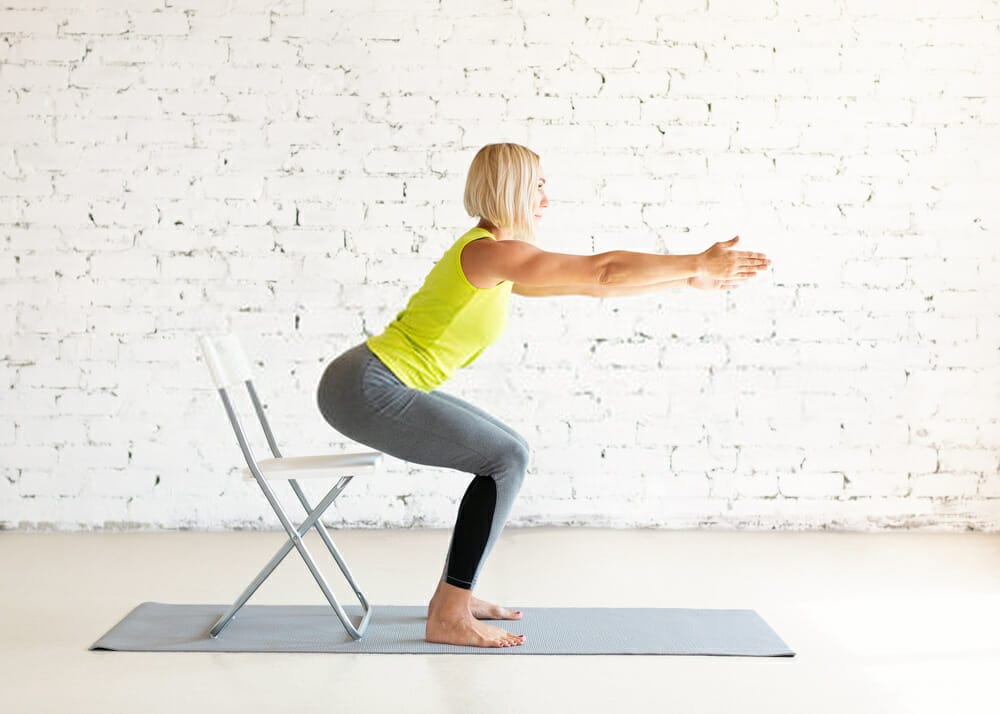
How to do it:
The base will begin on their back, with their legs bent and piled over their hips. Their legs should be hip-width apart and should extend their arms upward.
The flyer will face the base's feet and stand near their feet. They will place the ball of their right big toe on the base's right shin and grip the base's hands for support.
The person will then step up onto the left foot and place their right foot on the outside of their left calf.
From here, the flyer can stand up and remove their hands from the base’s grip. They can then return to Chair Pose with their arms extended past their ears after gaining equilibrium.
But, again, the base may grab the bottom of the flyer’s feet.
Foot to Hand
This pose helps both the base and flyer develop strength and control in their core while exercising their upper body.
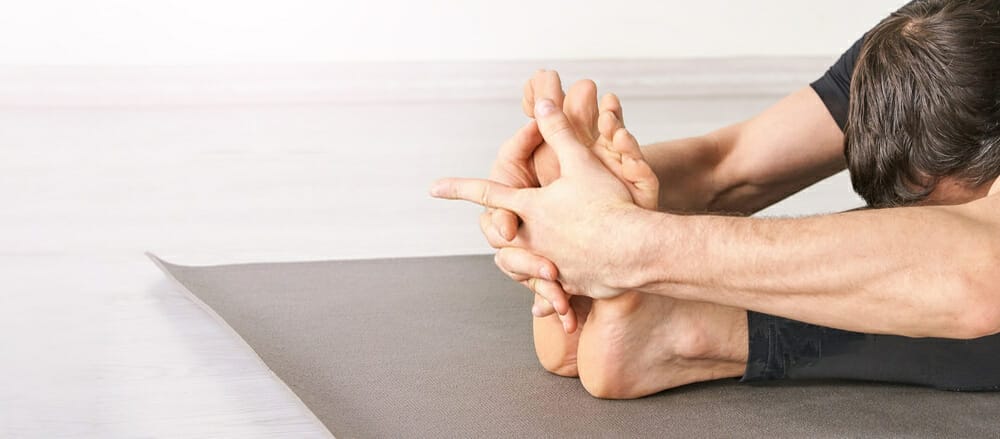
How to do it:
The base will start on their back, with their legs straight up, forming an L shape with their body. Next, they will bend their elbows so that their forearms face up, and their wrists will be piled over their elbows.
The flyer will begin by standing near the base's head, grabbing hold of the base's feet for stability. Next, they will step their right foot to their base's right hand, followed by the opposite side.
Finally, the base will grip the heels while maintaining their elbows on the ground and forearms straight.
From here, the flyer can regain their balance and carefully remove their hands from the base’s feet if they are comfortable.
Down Dog L-Shape
This variation of Down Dog develops the strength and control necessary for more advanced arm balances.

How to do it:
The base will shift into Downward Facing Dog, pushing their hands firmly into their palms as they stretch their tailbone back. The flyer will face away from the base’s hands and stand in front of them.
Next, the flyer will broaden their stance so that their feet are on each side of the base's hands before folding forward and placing their hands a few inches in front of the base's hands. The hands of the flyer should be precisely beneath their shoulders.
Next, the flyer will bring their feet up and lay them on the base’s low back, pressing hard through their toes, one foot at a time. Next, they should extend their legs so that they form an upside-down L shape with their bodies.
Fish On A Rock
In AcroYoga, the Fish on a Rock pose is good for opening up the hips and back.
How to do it:
The base will perform Child’s Pose, with their hands outstretched in front of them and their knees spread wide, resting their forehead on the ground.
The flyer will lie on their back, top of the base, arching their back over the back of the floor for a deep stretch.
The flyer might stretch their legs and allow their arms to fall out to the sides.
3 Person Acro Yoga Poses For Beginners
Below are some 3 person arco yoga poses for beginners These 3 person yoga poses are simple yet effective for everyone:
Triple Warrior 3
This is a simple three-person version of the classic partner Warrior posture that works well on a stable surface like wood or grass.
How to do it:
- Start by forming a circle in which everyone is facing the center.
- Exhale as you raise your arms above your head, palms facing in.
- Take a deep breath and shift your weight to your right leg.
- Hinge at the waist and allow your left leg fly back behind you on an inhalation.
- As you approach Warrior III, brace all of your hands flat against each other or interlock your arms, adjusting as needed to maintain balance.
- Maintain a level T-shaped plane with your hips facing the ground.
3-Way Lord Of The Dance Pose
Lord of the Dance is a good balancing posture to warm up in. You’ll have to explore a little, just like with two partners, to find the ideal interlocking grip.
How to do it:
- Begin by forming a circle in which each yogi faces the center.
- Shift your weight on one leg and bend your left leg behind you at the knee.
- Clasp your hand around the inner of your left ankle and slowly lift your foot into a complete ‘Lord of the Dance’ stance.
- Reach your opposite arm up and forward, clasping hands in the midst of the circle with your other yogis.
- Breathing together, rely on your partners for balance and strength.
3 Person Ballet Pose
This posture needs an extremely flexible flyer as well as solid bases. It’s a stunning expression that straddles the lines of cheerleading, ballet, and yoga. The ballet stance also provides a deep stretch for all participants.
How to do it:
- In a Warrior I, one person can begin.
- The second base should move backward into their Warrior position, aligning their front toes with the heel of the other base.
- Like a cheerleading pyramid, the third yogi steps onto the bases’ thighs.
- The flyer will next pivot to face one of the bases and hoist their front leg onto the shoulder of one of the bases, using their hands as support.
- The other base can assist the flyer in fully extending their rear leg into the splits, with each of the flyer’s shins evenly distributing the weight on the bases’ shoulders.
- Take a deep breath and make any necessary modifications.
Safety Tips For All Acro Yoga Poses
- Be sure to warm up and stretch out beforehand.
- Always practice in a space where you have room to fall. For example, if you are practising upside down in front of a mirror, ensure that you strap down your head so that it will not slam into the mirror if you fall.
- Practice with an experienced teacher who knows how to help people perform inversions safely.
- It is essential to have alignment, so always ask your teacher for feedback.
- Make sure that you are well hydrated and have had enough sleep before practising inversions. Also check out this article about yoga poses for sleep.
- Maintain communication with your partner.
The Bottom Line On Beginner Acro Yoga Poses
Acro Yoga for beginners is an incredible challenge that combines the skills of yoga, acrobatics, and dance. It requires a great deal of strength, trust, and communication to perform.
If you want to start practising, there are many locations around the globe where you can take classes and meet like-minded people.
You can also be in touch with AcroYoga online and find groups to join. You must try some basic acro yoga poses like 2 person acro yoga poses for beginners or even 3 person acro Yoga Poses for beginners to have more fun!
If you’re still on the fence about trying AcroYoga, do it. It is an excellent practice for creating a sense of community, keeping your yoga practice fun, and challenging yourself in new ways.
Take it gradually, recognize your limitations, be attentive – and, of course, have fun discovering everything AcroYoga has to offer!

